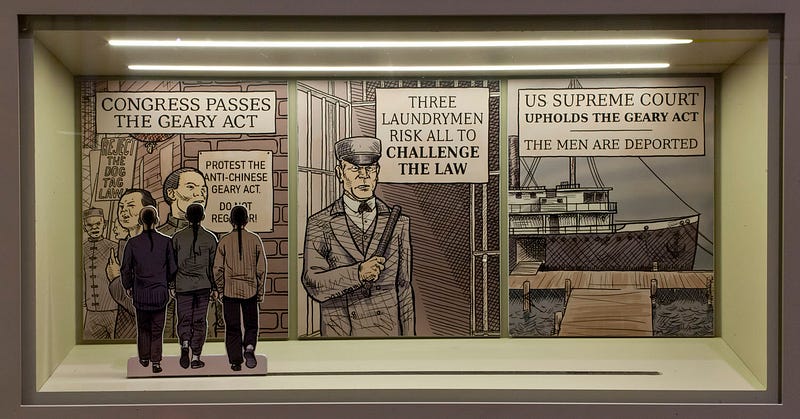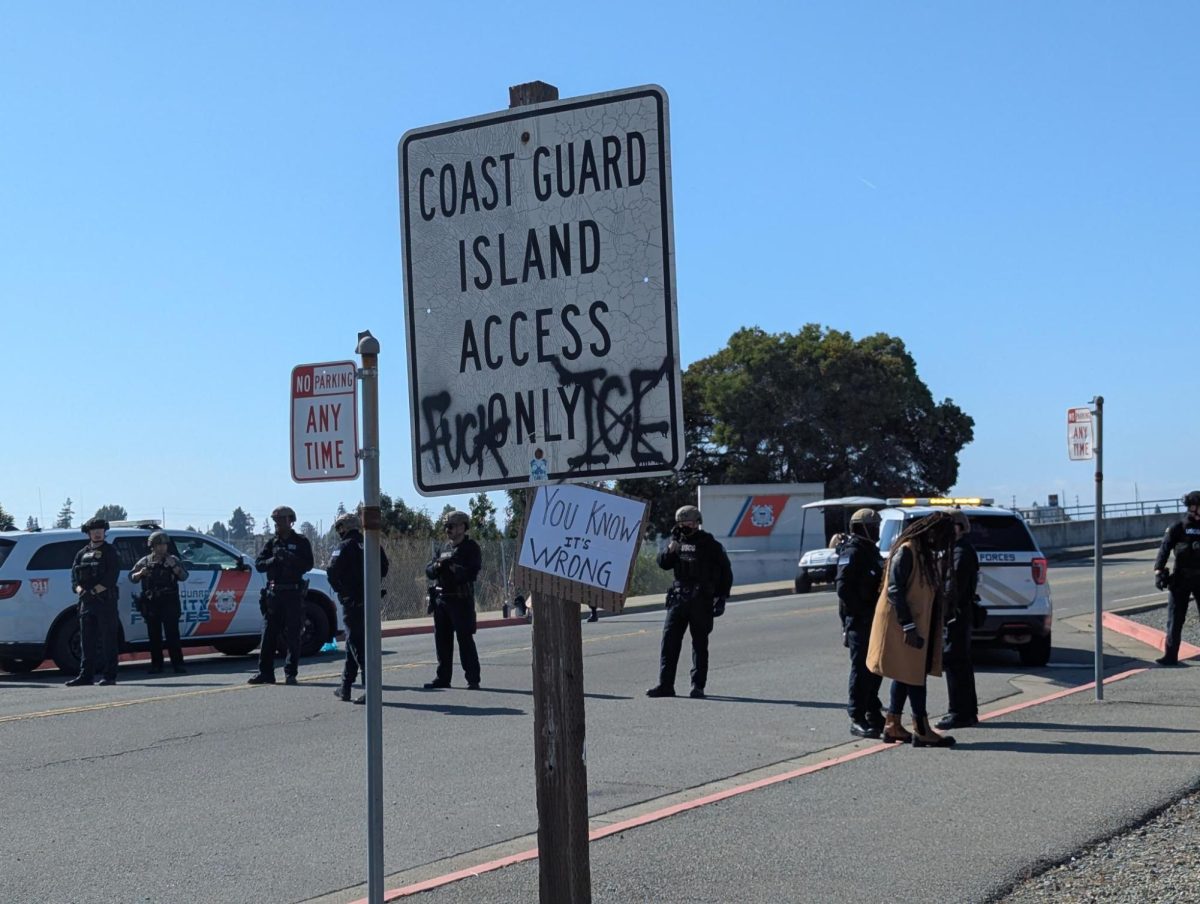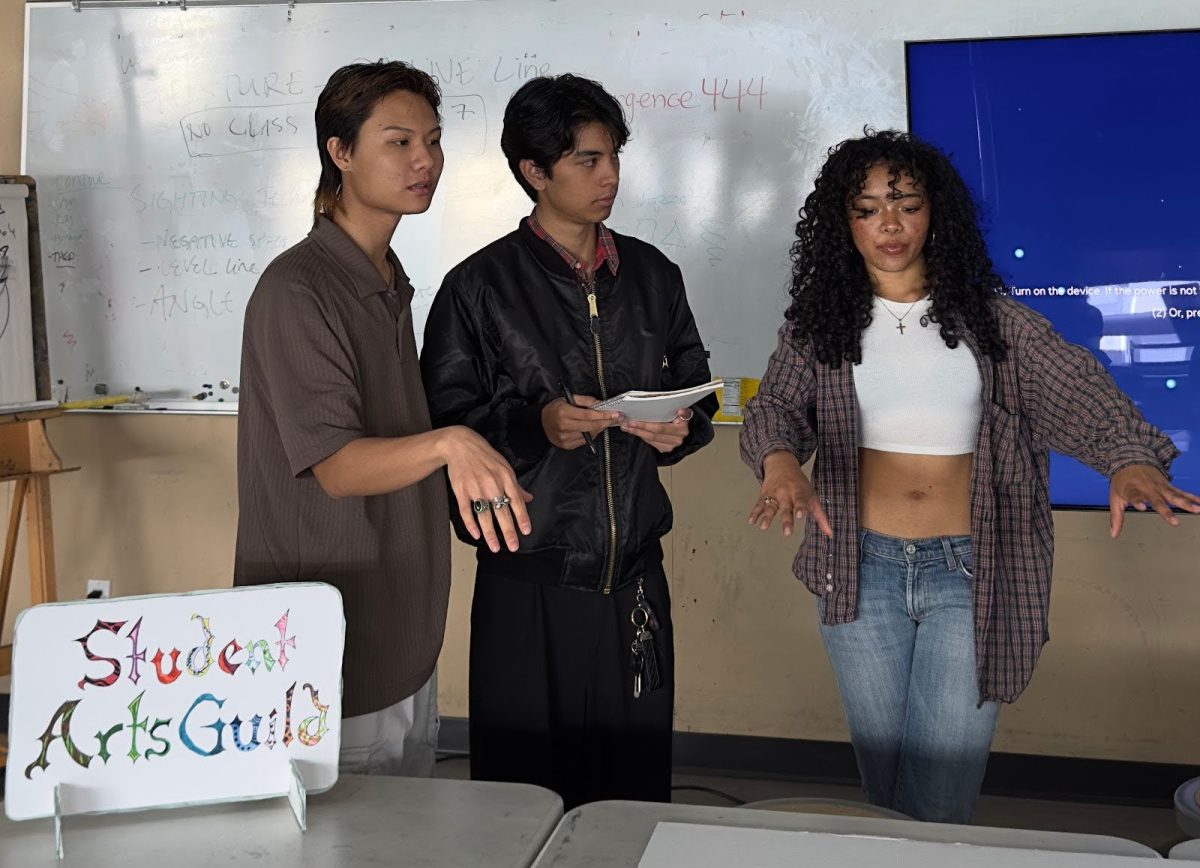
Happy Chinese New Year to the readers of the Laney Tower. It’s the year of the Rooster. For those that have interest in history there is the largest, and most comprehensive exhibition on Chinese America to date at the Chinese Historical Society of America. The CHSA is located in San Francisco’s Chinatown at 965 Clay Street.
The exhibit is called Chinese American: Exclusion/Inclusion. It “explores the centuries-long history of immigration and trade between America and China. This is a history that tells the stories of courageous men and women who fought against the Chinese Exclusion Act.” People that were spoken with about the exhibit as well as the curators believe this history has tremendous relevance in America and the entire world today.
This exhibit shows the bravery of Chinese immigrating into communities that were not very welcoming. They persevered against blatantly racist laws and citizens, and made flourishing Chinatowns all over the United States. The exhibit at the CHSA shows how this happened. Here are some historical facts that relate to the museum, and the exhibit.
There are two reasons large amounts of Chinese people started immigrating to America in the mid 1800’s. The California Gold Rush combined with thousands of people fleeing the devastating Taiping Rebellion (1850–1864). Many history books call that war the “Taiping civil war.” It was the most calamitous war China experienced that century.
Many Chinese citizens left the country to escape the violent upheaval hoping for freedom in the land of milk, honey and gold. What the immigrants didn’t know is that there were laws being made to keep Chinese and other Asian immigrants out of the United States. The Chinese Exclusion Act was passed on May 6th, 1882. It was the first immigration bill that targeted a specific ethnic group.
In 1910 Angel Island officially opened as an immigration station. Judy Yung is an author that recently published “America’s Other Immigrant Isle” about Angel Island. The article is published in America: History and Life. It came out on November 15th, 2016, and can be seen in print or on the web.
Yung has written about Angel Island, and the experience Chinese, and other Asian immigrants had while trying to get into the United States. This is an informative way to learn some of America’s history that most people don’t know about — a part of history that takes place in northern California.
Yung wrote; “As soon as a passenger ship from abroad docked at San Francisco, immigration and medical officials boarded. Passengers in first class, usually white and wealthy, underwent visual medical examinations in their cabins, and could then go ashore. Passengers in second and third class passengers were mostly Asian and poor.” They boarded a ferry to Angel Island for an indeterminate stay. Most immigrants stayed for at least a month or two, some for more than a year. The length of stay had to do with the Asian immigrant’s resources to legally fight for entry into the U.S.
On Angel Island people were segregated by race and gender. The white European immigrants were housed, fed and treated in a very different manner than the other Asian and non-white immigrants. White European women got single rooms. European men with pale complexions usually had to share rooms with one or two other men. Asian women, black women, and women with brown skin were housed in jail style dormitories with bars on the windows.
Many Asian immigrants were denied entry into America and put back onto ships sailing for Asia. Yung states; “Inspectors routinely rejected a lot more Asians compared to Europeans due to medical grounds.” They rejected the Asians for illnesses that they didn’t have. Angel Island closed down in 1939 because of World War 2 when it was made into a military base. The war changed many things in the U.S., including Chinese immigration.
On December 17, 1943 President Franklin D. Roosevelt repealed the Chinese Exclusion Act ending the era of legal exclusion of Chinese and other Asian immigrants. The repeal was known as the Magnuson Act. China was our ally in World War Two and in 1945 The War Brides Act allowed more Chinese immigrants to enter our country because foreign born wives of servicemen were allowed to become U.S. citizens.
The Displaced Persons Act (1948) and The Refugee Relief Act (1953) combined with the two previously described acts, allowed more than 10,000 Chinese immigrants entry into America. In 1965 the Immigration and Nationality Act revolutionized U.S. immigration policy by ending racial quotas. All of these occurrences made it easier for Asian immigrants to legally enter America.
In the early twentieth century Asian people made up only two percent of immigrants. By 1950 the percentage grew to nine percent. Currently the Census Bureau says that China replaced Mexico as the top country of origin for immigrants.
The exhibit at Chinese Historical Society of America shows photographs and artwork that tells stories of the journey that Chinese Americans have gone through to make America their home. The Chinatowns of San Francisco, Oakland, Los Angeles, other cities of California and America are dynamic, forever-modifying communities of America, and Chinese Americans are an integral part of American society.

























